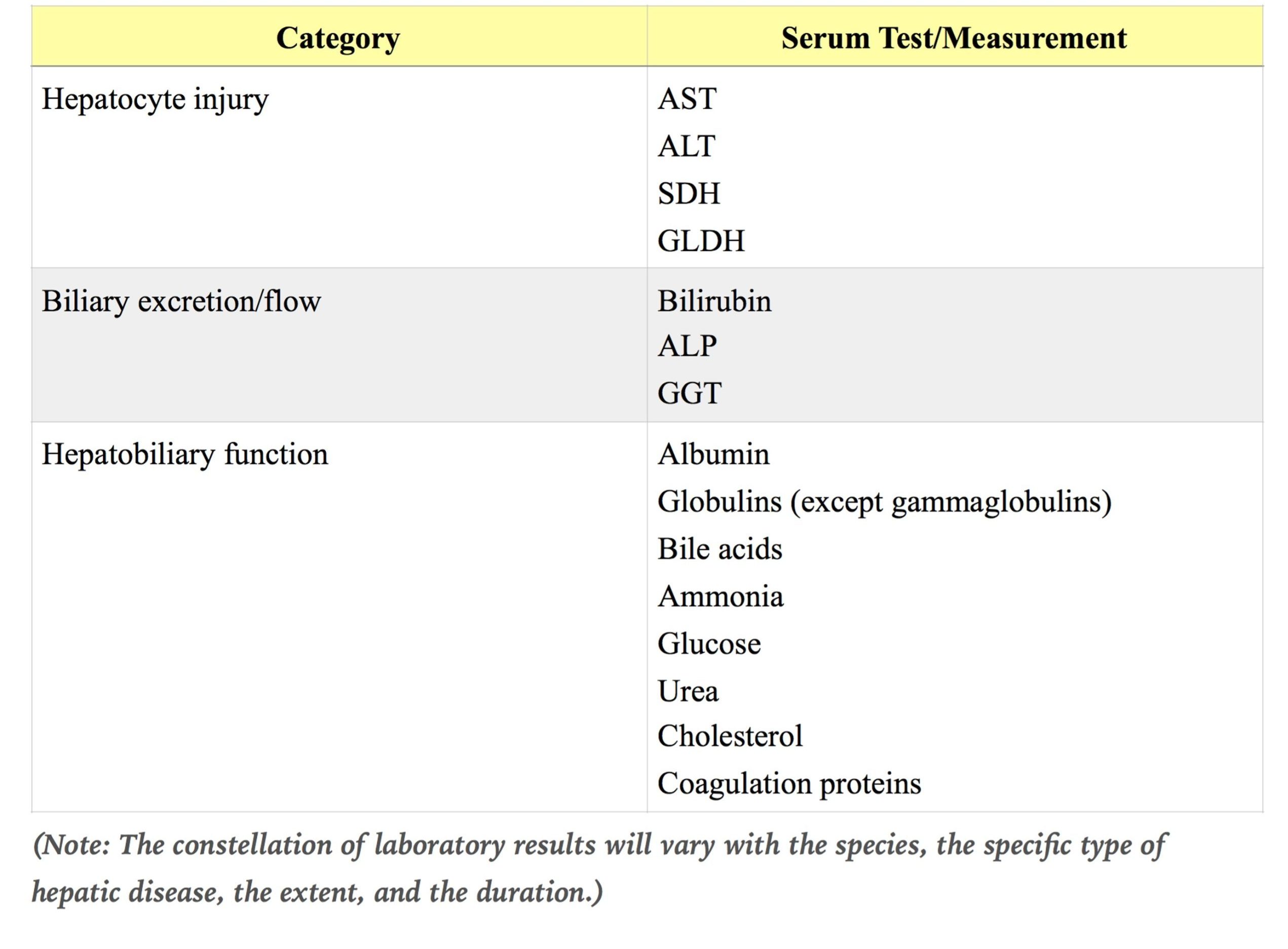Chapter 8: Hepatobiliary System
The liver’s many functions include storage and filtration of blood, metabolism of carbohydrates, proteins, and fats, storage of vitamins and iron, synthesis or degradation of several hormones, synthesis of most coagulation proteins, formation of bile, and degradation or detoxification of potentially noxious agents arriving in the portal vein from the digestive tract. The Kupffer cells, which line the hepatic sinusoids, are a major component of the mononuclear phagocyte system.
The many tests that are used to evaluate the hepatobiliary system are divided into those indicating hepatocellular injury (the “leakage” enzymes), impaired bile flow (i.e. cholestasis), and impaired hepatocellular function (Table 8.1). In addition and particularly in dogs, hepatic enzyme synthesis may be induced by endogenous or exogenous corticosteroids or certain other drugs. Occasionally, CBC and urinalysis results can also suggest hepatobiliary disease. Although a definitive diagnosis is not necessarily made based on hepatobiliary test results, they often provide important clues as to the nature of the hepatobiliary disease and, sometimes, the prognosis. Monitoring changes in these test results over time can also aid in predicting the outcome of various types of hepatic disorders.

See Secondary hemostasis.
Resident macrophage in the sinuses of the liver.
Group of phagocytic cells mainly derived from monocytes and differentiating to macrophages in various tissues.
Nonspecific term for sublethal or lethal injury to hepatocytes due to various causes, e.g. hypoxia, toxins, infection.
Impaired bile flow.

